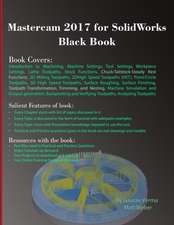LINUX Start-up Guide: A self-contained introduction
Autor Fred Hantelmann Traducere de Antje Faber, Roger Pooken Limba Engleză Paperback – 15 aug 1997
Preț: 337.20 lei
Preț vechi: 421.49 lei
-20% Nou
Puncte Express: 506
Preț estimativ în valută:
64.53€ • 66.57$ • 54.62£
64.53€ • 66.57$ • 54.62£
Carte tipărită la comandă
Livrare economică 05-19 martie
Preluare comenzi: 021 569.72.76
Specificații
ISBN-13: 9783540626763
ISBN-10: 354062676X
Pagini: 364
Ilustrații: XVI, 344 p. 363 illus.
Dimensiuni: 155 x 235 x 19 mm
Greutate: 0.55 kg
Ediția:Softcover reprint of the original 1st ed. 1997
Editura: Springer Berlin, Heidelberg
Colecția Springer
Locul publicării:Berlin, Heidelberg, Germany
ISBN-10: 354062676X
Pagini: 364
Ilustrații: XVI, 344 p. 363 illus.
Dimensiuni: 155 x 235 x 19 mm
Greutate: 0.55 kg
Ediția:Softcover reprint of the original 1st ed. 1997
Editura: Springer Berlin, Heidelberg
Colecția Springer
Locul publicării:Berlin, Heidelberg, Germany
Public țintă
Professional/practitionerCuprins
1.1 Linux Versus Unix.- 1.2 Kernel Architecture.- 1.3 Guide.- 1.4 Typographical Conventions.- Development of Unix.- 2.1 Academic Versions.- 2.2 Commercial Breakthrough.- 2.3 PC Unix Variants.- 2.4 Free Unix Distributions.- Operating Linux.- 3.1 Login, Logout, Shutdown.- 3.2 Quick Lead-in.- 3.3 Command Interpreter.- 3.4 User Profiles.- 3.5 Online Help.- Programs and Processes.- 4.1 Process Monitoring.- 4.2 Creating Processes.- 4.3 Process Signals.- 4.4 Independent Processes.- 4.5 Process Priority.- 4.6 Daemons.- Files and File Systems.- 5.1 File Systems.- 5.2 The Directory Tree.- 5.3 File Types.- 5.4 File Attributes.- 5.5 Device Files.- 5.6 Device Administration.- File Oriented Commands.- 6.1 Changing the Working Directory: cd.- 6.2 Creating and Removing.- 6.3 Displaying Contents.- 6.4 Renaming Entries.- 6.5 Changing Attributes.- 6.6 Copying, Saving, Reloading.- 6.7 Searching, Comparing, Sorting.- 6.8 Formatting Files.- 6.9 Data Compression.- 6.10 Regular Expressions.- Editors.- 7.1 The Stream Editor sed.- 7.2 The Screen Editor vi.- 7.3 GNUEmacs.- Shell Programs.- 8.1 Linux Shells.- 8.2 bash and ksh.- 8.3 tcsh Programs.- Networked Systems.- 9.1 Network Topologies.- 9.2 Protocol Families.- 9.3 OSI.- 9.4 TCP/IP.- 9.5 System Addresses.- 9.6 Network Services.- 9.7 Network Configuration.- TCP/IP Applications.- 10.1 Network Analysis.- 10.2 telnet.- 10.3 Berkeley r Utilities.- 10.4 Terminal Emulators.- 10.5 File Transfer.- 10.6 Electronic Mail.- 10.7 News.- 10.8 Dialog Programs.- 10.9 Information Systems.- X Window System.- 11.1 Window Systems.- 11.2 Architecture of X11.- 11.3 Widgets.- 11.4 Working with X11.- 11.5 X Resources.- 11.6 X Fonts.- 11.7 X Colors.- X Window Manager.- 12.1 Tab Window Manager twm and ctwm.- 12.2 OpenLook WMs olwm and olvwm.- 12.3 F(?) Virtual Window Manager fvwm.
Textul de pe ultima copertă
This systematic overview for beginners, converts to LINUX, and system administrators gives full details of operating system architecture, LINUX basic commands, and typical development and application packages. Fred Hantelmann focuses on the LST distribution (Power LINUX) to provide a quick route to practical deployment.








